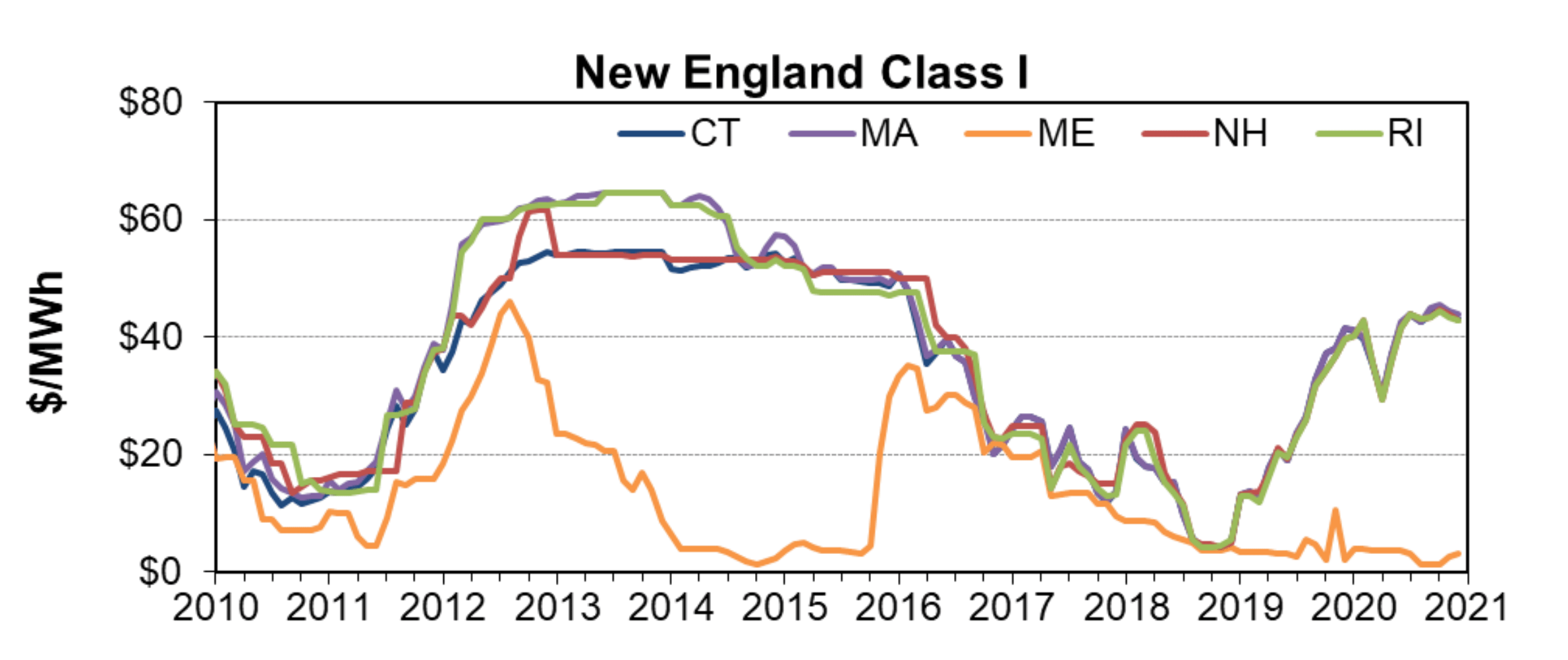Renewable Energy Credits Overview
A REC is a certificate representing the environmental benefits from one megawatt-hour (1,000 kilowatt-hours) of electricity produced from a renewable resource like sunlight. RECs are not tied to the physical energy produced by the system, meaning they can be ‘unbundled’ and sold to an entity that is not necessarily using the electricity that produced them.
How Does the REC Market Work?
RECs were conceptualized about a decade ago as a way to keep track of the amount of renewable energy being generated within any region of the country. Generally, there are two types of REC markets: (1) voluntary and (2) compliance. The voluntary market is comprised of participants that have no legal obligation to procure renewable energy or reduce carbon emissions; they are typically entities such as businesses, universities, or individuals that are mission-driven to promote the environment and the development of renewable energy. Compliance markets were born with the creation of state Renewable Portfolio Standards (RPS), laws that mandated that electricity retailers source a certain percentage of their electricity from renewable resources. Compliance market RECs are the states’ way of tracking whether the electric retailers are indeed procuring the amount of renewable energy mandated by their Legislatures as meeting their RPS standards.
How much are RECs worth?
 REC prices can be highly volatile, as they are subject to changes in RPS laws, as well as supply and demand fundamentals. Prices range widely depending on the state market and if they can be used for compliance purposes. In the voluntary market there is no legally obligated ‘demand.’ Instead, buyers enter the market at their own free will. The supply is typically provided by renewable energy projects located in areas that don’t allow the projects to qualify to generate more valuable compliance market RECs. However, you do not have to have a legal obligation to be able to buy RECs that qualify for compliance purposes, but they are typically more expensive than voluntary-only RECs.
REC prices can be highly volatile, as they are subject to changes in RPS laws, as well as supply and demand fundamentals. Prices range widely depending on the state market and if they can be used for compliance purposes. In the voluntary market there is no legally obligated ‘demand.’ Instead, buyers enter the market at their own free will. The supply is typically provided by renewable energy projects located in areas that don’t allow the projects to qualify to generate more valuable compliance market RECs. However, you do not have to have a legal obligation to be able to buy RECs that qualify for compliance purposes, but they are typically more expensive than voluntary-only RECs.
In the compliance markets, REC prices depend on each State’s regulatory requirements and on supply and demand. Like any traded good, prices change frequently. Most programs have what are called Alternative Compliance Payments (ACPs). ACPs act as the price ceiling, as those with compliance obligations can pay the ACP in lieu of purchasing RECs on the open market (however, the ACP is typically considerably above the market price).
Will all generation from my system count towards the creation of RECs?
Yes, although the initial registration and approval process can take several months, so the first quarter’s worth of generation may not count for RECs. Projects may be registered at any time on a rolling basis, but historical generation will not count for RECs prior to registration.
Are all solar energy systems eligible to create RECs?
Yes. In order to create and sell RECs, a solar array must have a revenue grade meter (RGM), which ReVision automatically installs with most solar projects today, and an active internet connection to automatically report data to the REC banking entity, NEPOOL-GIS.
As the system owner, what do I need to do to ensure my system generates RECs?
Solar owners should maintain their internet connection and periodically monitor system production. Extended internet outages may cause the loss of data for RECs. Due to the sheer volume of systems installed, it isn’t feasible for ReVision to keep watch on all the systems in the field. We ask that you please keep an eye to make sure your internet remains connected. We see the most internet connectivity issues arise due to changes in internet service providers, changes to your wifi password, or the installation of new internet hardware. We also encourage solar owners to track their solar generation at least monthly and give ReVision a call if you have any service-related issues. We will be more than happy to help troubleshoot and remedy the problem. We also provide comprehensive operations and maintenance (O&M) services, which include remote monitoring, annual onsite inspections, and preventive maintenance for customers wishing to ensure maximum system performance with little or no downtime over the 25-year solar panel warranty period.
RECs & Environmental Claims
Since REC programs are legislatively designed to reduce carbon pollution through the deployment of clean energy, ReVision encourages customers looking for the most affordable path to solar ownership to take advantage of REC sales for added revenue. Most commercial solar owners opt to sell their RECs for this reason. In so doing, they also sell the right to make any claim about the “green” status of their solar generation, even though they are typically consuming the generated electricity onsite. In the interest of accuracy and transparency, customers selling their RECs should therefore disclose in all public communications that they are delivering solar electricity and RECs to the utility. Since a typical ReVision cashflow assumes 10 years of REC sales, customers can be confident that for most of the system life they will be able to own and claim all environmental benefits without compromising their financial performance. For detailed guidance on making environmental claims when selling RECs, please see their page on making renewable energy related claims.
